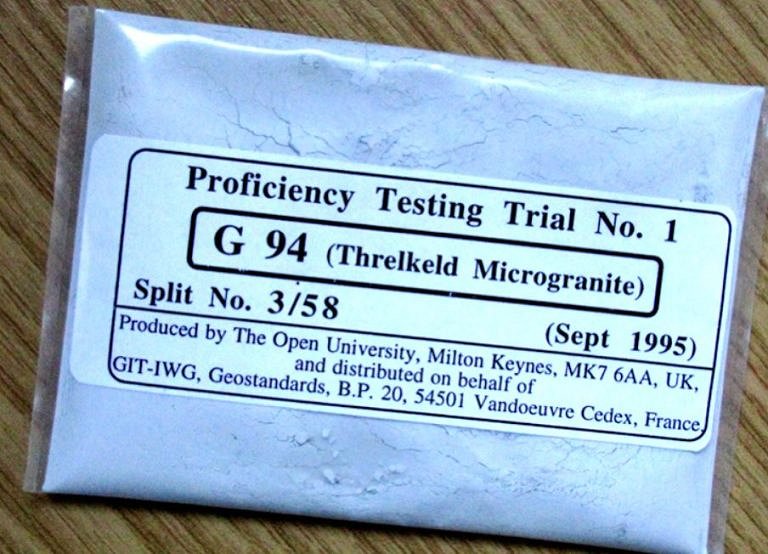Successful participation of the XRF laboratory in intercomparison measurements in the GeoPT program

The XRF laboratory participated in intercomparison measurements in the GeoPT (Proficiency Testing Program for Geochemical Laboratories) of two samples NES-1 (silty soil) and BIM-1 (silty soil), in which a total of 92 analytical laboratories from around the world participated. A wide range of different analytical techniques were used, both non-destructive, such as Energy-Dispersion X-Ray Fluorescence spectrometry (EDXRF) and Wave Dispersion X-ray Spectroscopy (WDXS), as well as destructive, such as Inductively Coupled Plasma Atomic Emission Spectroscopy (ICP-AES) and Inductively Coupled Plasma Mass Spectrometry (ICP-MS). This type of intercomparison is an extremely interesting professional challenge for any analytical laboratory due to the complex matrix of the sample itself, which is ideal for testing the efficiency and adequacy of sample decomposition and preparation procedures, as well as due to the large number of different elements in a wide range of macro and micro concentration areas, which for multielement techniques represents a major challenge in the field of quantification and evaluation and management of interference effects that occur in samples with a large number of elements. A comprehensive official report on the type and number of elements analyzed comprises up to 54 elements in the macro and micro concentration range in both of the above-mentioned samples. Our laboratory reported concentrations of 24 elements based on the capabilities and physical capabilities of the current configuration of EDXRF laboratory spectrometers on the one hand and the size of the concentrations in the sample on the other. Both certificates of our reported and reference values of element concentrations and acceptance criteria NES-1 (silty soil) and BIM-1 (silty soil) are attached. We achieved great success, as 19 elements were reported within acceptable limits. Remaining were slightly lower evaluated for these elements due to the well-known poorer analytical sensitivity of the XRF technique, but still acceptable in terms of characteristics, requirements, usual purpose and scope of XRF use. XRF is a fast, simple and inexpensive, multi-element, non-destructive screening analytical technique, ideal and primarily intended for rapid tests and investigations of a large number of samples based on an elemental fingerprint.